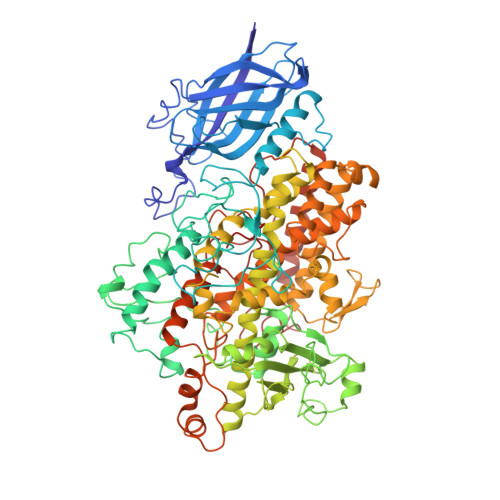Inhibition of lipoxygenase by (-)-epigallocatechin gallate: X-ray analysis at 2.1 A reveals degradation of EGCG and shows soybean LOX-3 complex with EGC instead.
Skrzypczak-Jankun, E., Zhou, K., Jankun, J.(2003) Int J Mol Med 12: 415-420
- PubMed: 12964012
- Primary Citation of Related Structures:
1JNQ - PubMed Abstract:
Lipoxygenases (LOXs) are non-heme iron containing enzymes ubiquitous in nature and participating in the metabolism of the polyunsaturated fatty acids (PUFA). They are capable of combining their dioxygenase activity with its co-oxidative activity manifesting itself in biotransformation reactions catalyzed by LOXs for other than PUFA small molecules. LOXs involvement in inflammatory diseases and cancer have been well documented. Catechins are the natural flavonoids of known inhibitory activity toward dioxygenases with a potential to be utilized in disease prevention and treatment. This work presents results obtained from an X-ray analysis of (-)-epigallocatechin gallate (EGCG) interacting with soybean lipoxygenase-3. The 3D structure of the resulting complex reveals the inhibitor depicting (-)-epigallo-catechin that lacks galloyl moiety. The A-ring is near the iron co-factor, attached by the hydrogen bond to the C-terminus of the enzyme, and the B-ring hydroxyl groups participate in the hydrogen bonds and the van der Waals interactions formed by the surrounding amino acids and water molecules.
Organizational Affiliation:
Urology Research Center, Medical College of Ohio, Toledo, OH 43614-5807, USA. eskrzypczak@mco.edu
















